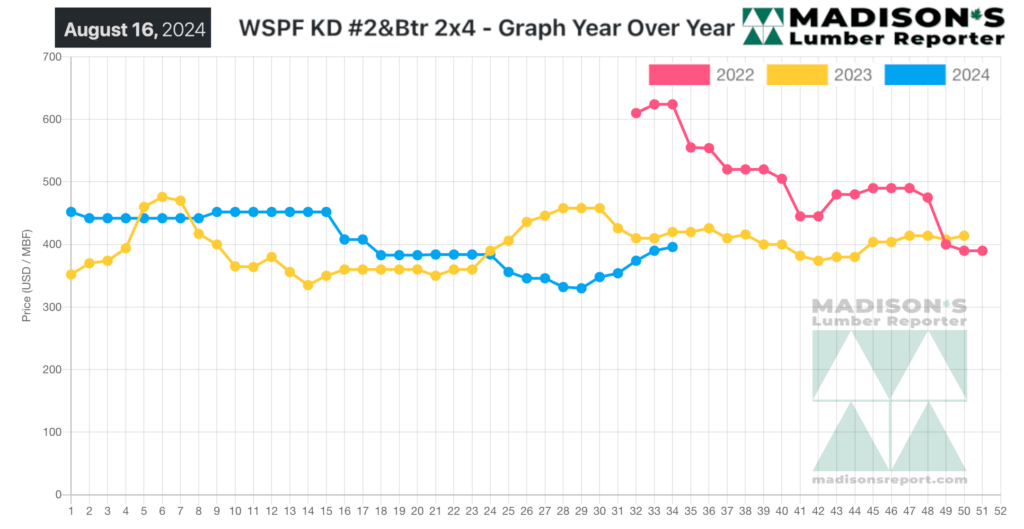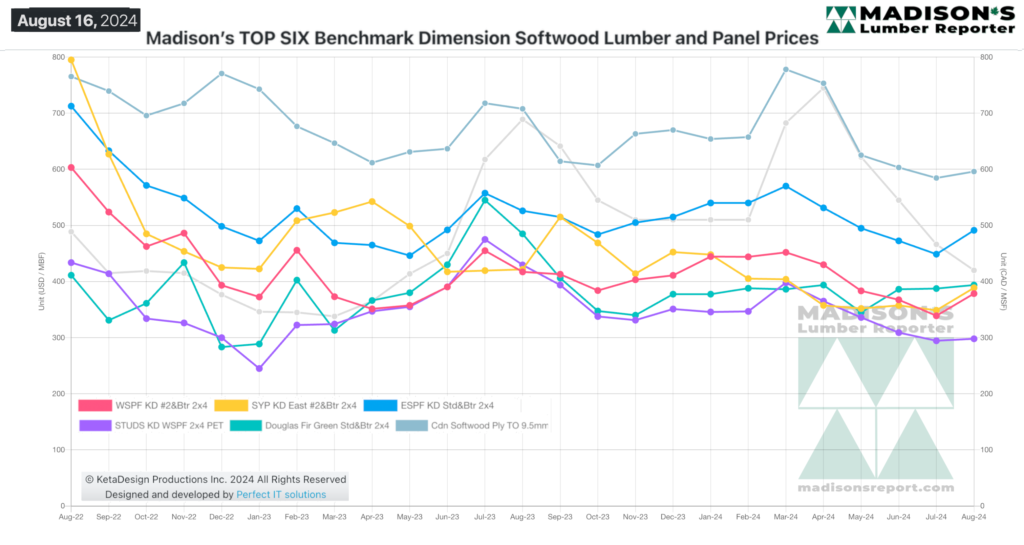In mid-August the tide had clearly turned, as lumber purchasers were caught short on the solid wood inventory they needed for ongoing projects.

Prices on many lumber commodity items again ticked upward as all players’ inquiries at sawmills increased. Subsequently order files stretched out to three weeks or longer.
In addition, end-users tried to put pressure on suppliers for quicker shipments of wood products already ordered, mostly to no avail.
Deliveries have already been a challenge for more than one year, so there is not much lumber sellers can do to speed up transportation. An administrative jump in softwood lumber duties
on Canadian imports to the US and a looming railway work-stoppage in Canada only increased uncertainty.
In the week ending August 16, 2024, the price of benchmark softwood lumber item Western Spruce-Pine-Fir 2×4 #2&Btr KD (RL) was US$395 mfbm. This is up +$10, or +3%, from the previous week when it was $385, said weekly forest products industry price guide newsletter Madison’s Lumber Reporter.
That week’s price is up +$46, or +13%, from one month ago when it was $349.
Sales of lumber and studs continued to ramp up while that of panels were flat by comparison. Increased duties were imposed on Canadian softwood lumber shipments to the US.

KEY TAKE-AWAYS:
- US suppliers of Western S-P-F were largely finished clearing out any leftover cheap material.
- Unending inquiry for wider widths and not even close to enough coverage for buyers.
- Purchasers insisting on replacement-buying over the past several months had no inventory of their own to fall back on.
- Months of hand-to-mouth buying left field inventories in a severely depleted state.
- Strong demand for Eastern S-P-F handily outpaced dwindling supply.
- Buyers had trouble getting a handle on significant variations in pricing and availability between sawmills.
- While increasing prices of Southern Yellow Pine had lead this latest rally; it was now noticeably lagging behind a stronger looking S-P-F market.
- Recent rainy weather in the US South reduced the amount of larger-diameter logs in many sawmill decks.
Madison’s Benchmark Top-Six Softwood Lumber and Panel Prices: Monthly Averages

